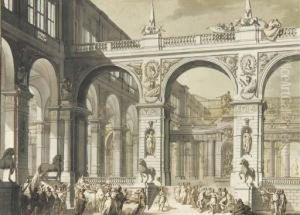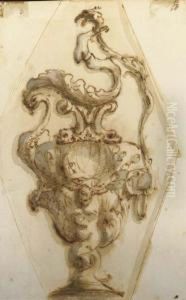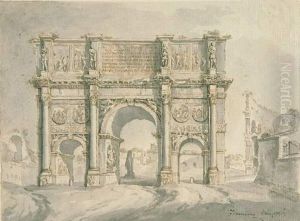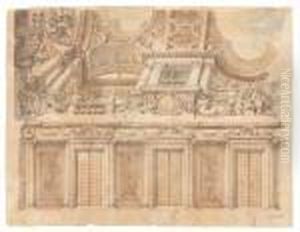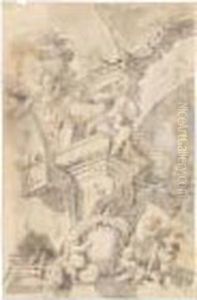Flaminio Innocenzo Minozzi Paintings
Flaminio Innocenzo Minozzi was an Italian sculptor and architect who was active during the late Baroque and early Neoclassical periods. Born in Orvieto, Italy, in 1715, Minozzi was part of the artistic movement that transitioned from the ornate and dramatic styles of the Baroque to the more restrained and classical approaches of Neoclassicism. Though not as widely known today as some of his contemporaries, Minozzi made significant contributions to the art and architecture of his time, particularly within his native Italy.
Minozzi's early life and training are not well-documented, but it is known that he began his career as a sculptor. His works in this medium were characterized by their dynamic composition and emotional intensity, qualities that were typical of the Baroque style. However, as his career progressed, Minozzi's style evolved, and he began to incorporate the more orderly and serene elements that characterized Neoclassicism. This evolution is evident in his architectural works, where he demonstrated a clear understanding of classical principles and a preference for symmetry and proportion.
Despite his talents, Minozzi was often overshadowed by more prominent figures of his time, such as Gian Lorenzo Bernini and Antonio Canova. Nonetheless, he was respected by his peers and received commissions from important patrons, including members of the Catholic Church and the Italian nobility. Minozzi's work as an architect includes several churches and public buildings in Orvieto and the surrounding region. These structures often feature a mix of Baroque flamboyance and Neoclassical restraint, mirroring the transitional nature of the period in which he worked.
Flaminio Innocenzo Minozzi died in 1785. While his legacy is not as extensive as that of some of his contemporaries, he is remembered for his contributions to the architectural and sculptural landscape of 18th-century Italy. His works continue to be studied by art historians and appreciated by those who visit the buildings and sculptures he left behind.
